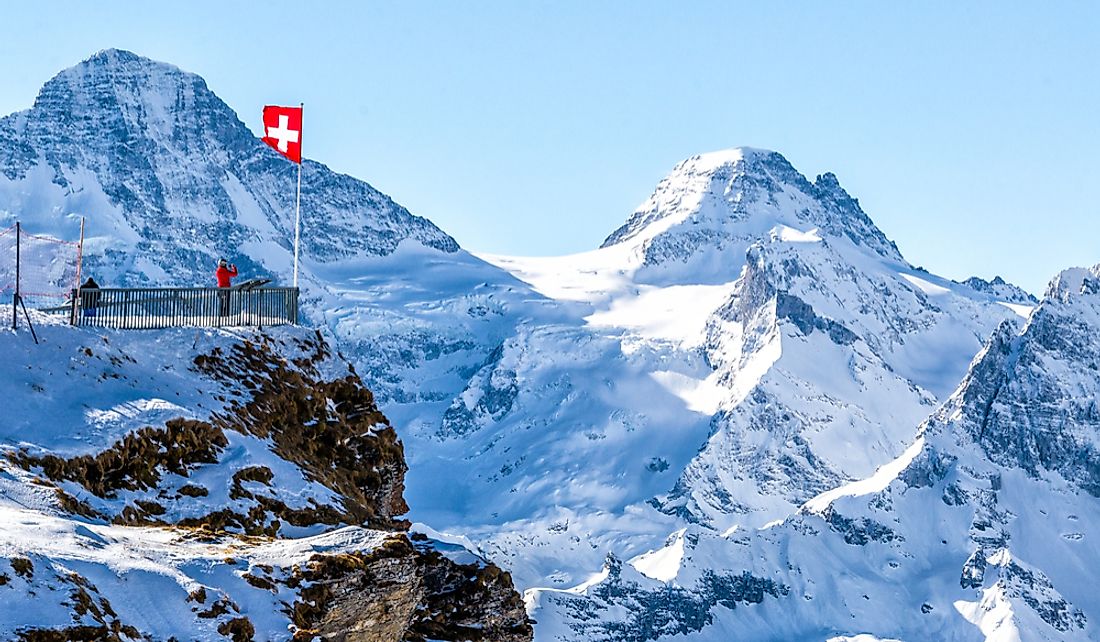Where Are The Swiss Alps?

The Swiss Alps refer to Switzerland’s Alpine region, which is one of the nation’s major physiographic regions together with part of the Jura Mountains and the Swiss Plateau. The Swiss Alps spread out over a region that is sometimes known as the Central Alps, which lies over both the Eastern and Western Alps. The northern parts of the Swiss Alps are entirely within Switzerland while the southern ones are shared with other countries like France, Austria, Italy, and Liechtenstein. The Swiss Alps contains some high mountains such as the Dom (4,545 m), the Matterhorn (4,478 m), Dufourspitze (4,634 m), and others.
Geography
The Swiss Alps form a significant part (about 65%) of Switzerland’s land area of about 15,940 square miles. Despite the fact that 65% of Switzerland is covered by the Alps, only 14% of the total Alps area is located in the country. The Alps have a total area of around 74,422 square miles. The extensive Alps also have glaciers spanning an area of around 470 square miles, which equates to about 3% of Switzerland’s surface area. The alpine region has a number of Swiss cantons including Valais, St. Gallen, Zug, Appenzell Innerrhoden, Appenzell Ausserrhoden, and others. Modern geography divides the Alps into the Western and the Eastern Alps. The border between these two lies along the Rhine all the way from the Splügen Pass to Lake Constance.
Water
The Swiss Alps also have a number of major rivers and lakes. For example, the Inn, Rhine, and Rhone rivers are responsible for the drainage of the northern side. The Ticino River drains most of the southern side. The rivers of the Alps drain into a number of basins including the Mediterranean, the Black, the North, and the Adriatic Seas.
Most of the lakes are man-made and are used for the generation of hydroelectric power. Some of the man-made lakes can be found as high as 2,300 meters while larger natural ones are mostly below 1,000 meters. In this context, a large lake is one that has an area of at least 1km2. However, some large natural lakes exist above 1,000 meters such as Lake Sils. Since there are several glaciers on the Alps, it is possible for new lakes to be created from the melting water. An example of such a lake is Lake Triftsee, which has an area of about 0.25 km2.
Climate
The Swiss Alps have three major altitudinal regions with each having a unique climate. The first (and the largest) zone is the Subalpine zone, which does not go beyond the tree line. All human settlement is located in this zone. The second one is the Alpine zone, which is beyond the tree line. The last zone is the Glacial zone, which, as the name suggests, is a region covered by snow and ice on a permanent basis.
Tourism
The Alps have been a tourist attraction for a long time since 1811 when people started climbing the peaks. Most of the climbers have been British accompanied by local guides. Tourist facilities were not constructed until the 19th century. Today, the Alps attract thousands of visitors from all over the world every year.











